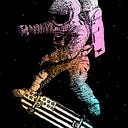
Digital product design practice is tricky. It’s a blend of closely related specialisations which up until recently were distinct; user research, visual design, front end engineering, interface design, interaction design, copywriting, business strategy, marketing.
I’ve been attempting to enter into rhythmic design practice. Basically exploring the depths of digital product design.
There are two problems I’m facing at the moment.
The first: Boredom.
In James Clear’s book Atomic Habits he asked an elite coach: “What do the really successful people do that most don’t?”.
The coach said,
At some point it comes down to who can handle the boredom of training every day, doing the same lifts over and over and over.
This is a difficult truth, it’s 2019, innovations in digital media have made it very difficult for the average person to do boredom well. There’s an endless supply of mindless entertainment engineered to keep you occupied.
The fix is to revel (read endure) the boringness of practice.
The second: How to practice.
This writer clearly articulates the problem with design practice here. As a learning designer, it takes too long to know if you’re doing the right thing.
The feedback loop can be long and vague. Let me illustrate with an example: to practise the piano, you listen to the music you’re trying to master. You play something like it, you immediately hear that it’s incorrect. You repeat. There’s instant feedback.
A learning feedback loop enables you to try something and get feedback from the system (i.e. piano) that informs you whether you are wrong or right and by how much. Skills that can be rapidly acquired typically have very fast feedback loops(i.e. folding paper) and very transparent spectrums of how close/far you are from the target.
I read Artiom Dashinsky’s book, Solving Product Design Exercises. He presents a framework to merge the various skills a product designer needs to have and gives bite-sized exercises to practice on.
Design mastery requires the designer to inculcate the skills into muscle memory. That design thought and action be fluid and moved from conscious into unconscious thought.
In conclusion.
Enjoy being bored.
Make design practice feedback as instantaneous as you can.
